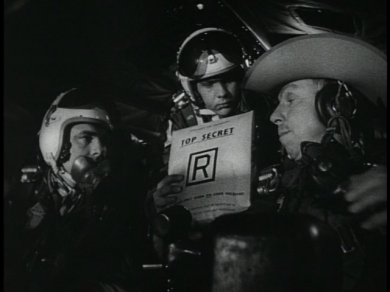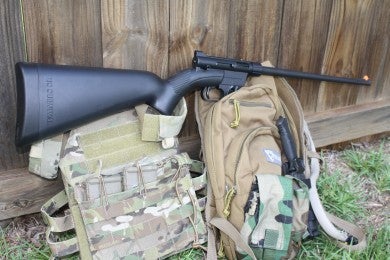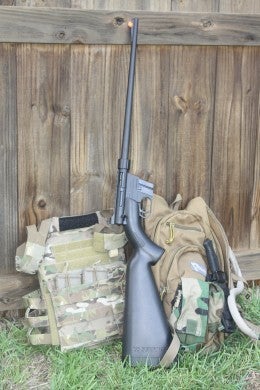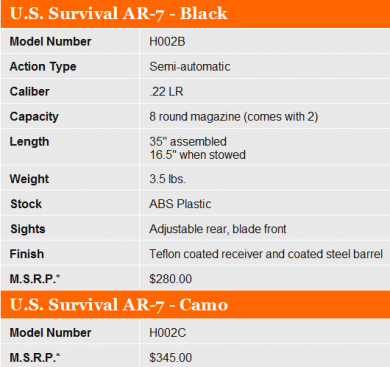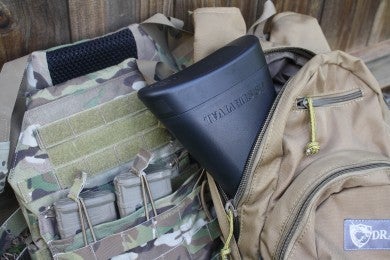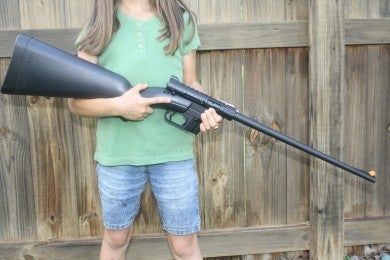Henry’s US Survival Rifle (AR-7): Novelty or Necessity?
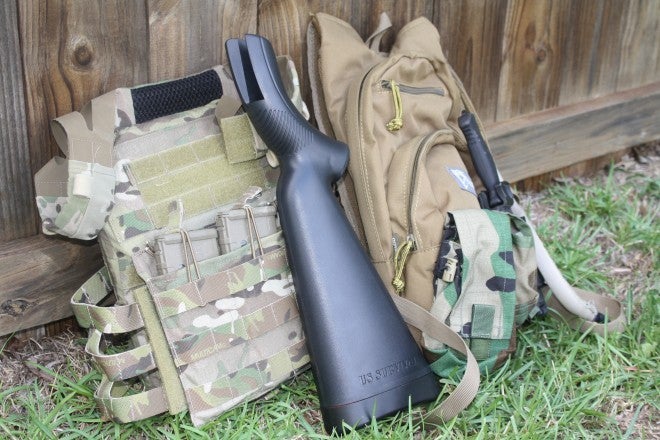
The Henry US Survival Rifle didn’t start out as the Henry US Survival Rifle.
click play
Armalite originally built the rifle, for the USAF, for pilots and bomber crews during the Cold War. The idea was that American pilots would need to survive if shot down, until rescued. A small, light, portable rifle was chosen. That is the now-fabled story of the origin of the AR-7. When looking at this rifle through that lens, it’s easy to see the utility of such a gun. Also, it’s easy to imagine it being on the list of items Major Kong reads to the crew of his B-52 in the film, Dr. Strangelove.
Armalite eventually sold the rights to Charter Arms who then sold the rights to Henry in 1980. There have been several variations of the rifle over the years. The rifle gained some notoriety because of its use in film, especially in several of the Connery-era Bond films.
The entire rifle is made to be disassembled, without tools, and fit into the stock. The barrel is held onto the receiver by a large barrel nut and the receiver is attached to the stock by a long bolt. Both the barrel nut and the bolt are easy to manipulate and the rifle can be assembled and disassembled in less than a minute. The barrel, receiver and magazine(s) fit into the stock in spaces molded for the respective parts. It is an interesting concept to say the least. Once the weapon is disassembled and inside the stock, it is very portable. Overall, it is probably the most lightweight, portable, semi-auto .22 rifle commercially available.
The real issue with this particular gun is this: is it just a novelty? Despite Henry’s recent improvements in the rifle (rail on top of the receiver, teflon coating, etc.) people either seem to love them or hate them. Several people I know that have owned them in the past have sold them because the fun of disassembly and reassembly wears off over time. The reasons for owning them or liking them seem to boil down to personal preference.
In answer to the above question, yes, the gun technically is a novelty. It was designed to be a novelty limited to certain scope of use or set of circumstances for particular shooters. But when you distill the concept of the original intent of the rifle – something portable to have on hand just in case – it certainly isn’t a bad item to have around. As always, I’ll tell you my observations and you can make up your own minds…or scold me in the comments section.
My thoughts centered on its practicality. It is, as rifles go, very portable. The overall length of the gun once tucked into the stock is 16.5 inches. Plus, it weighs just over 3 pounds. I was able to find room for it (easily) in the backpacks that my family and I use for the outdoors. I couldn’t help but wonder just how much more portable it could be if the NFA rules didn’t apply or exist. As it is now, once assembled, it’s just a hair shorter than the Ruger Takedown rifle.
There is no doubt that it’s convenient, but I kept trying to imagine a scenario that this gun would be perfect for a time or place I wouldn’t already have a gun or two handy. For example, if I’m camping, this rifle would fit into a backpack and is light enough where it wouldn’t be a bother to carry it. But in that situation, I’d already have a primary and secondary, both probably larger than .22. What about as a backup gun? That’s a good idea, but for me, I’d want a backup gun that I can get to in a hurry, not one I need to assemble. It would be fun to take camping and put on a red dot or scope, but you’d have to take those off if you want the parts to fit in the stock – every time. Don’t misunderstand me. The gun is tough and made well. It shoots good groups and is lightweight. But where would someone like me take it where I wouldn’t already have a gun filling the purpose I need one for?
I can’t imagine a scenario where I would need this rifle. But that’s the point. That led me to the conclusion that I spent a lot of time wondering why I’d need one, but I certainly can’t think of I reason why I shouldn’t have one. It would be foolish not to have something in a backpack or a bug out bag or a trunk (where permissible by law). I’d much rather have it and not need it (although it is a great and inexpensive shooter that I think most people would enjoy) than to need it and not have it. And that’s just it. The rifle is built for scenarios just like that. When faced with the abundance and relative opulence of the guns we own, this may seem frivolous. When faced with a survival scenario, you better believe that I want one of these. That’s the niche this rifle fills. In that regard, it really is a “survival” rifle. This rifle was built for when a novelty might be an absolute necessity. And none of us ever know exactly when those times are.
Personal preference reigns, but after having an opportunity to experience this rifle, I’m going to get one. I would encourage you not to dismiss the chance to own one.
